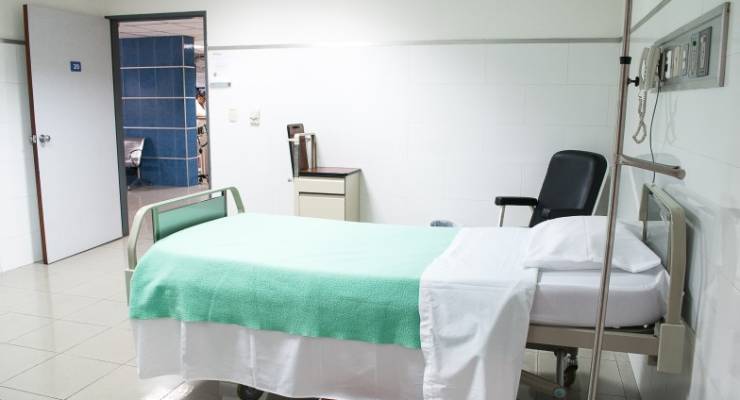
With officials estimating up to 150,000 Australians could die from the coronavirus under the government’s worst case scenario, does Australia have enough hospital beds to care for a rise in patients?
The answer is complex. It depends on where the beds are needed, and whether we see a big spike in the number of cases presenting to hospitals, as was the case in Italy. This is why officials are doing everything they can to “flatten the curve” and avoid overwhelming the healthcare system.
Dr Mukesh Haikerwal, former president of the Australian Medical Association, told ABC’s Q&A program on Monday night that Australia did not have the intensive care capacity to deal with a big spike in COVID-19 patients.
“No we don’t have enough [ICU beds], if we get the spike,” he said. But if social distancing measures work and there is a slow rise in the number of patients, “we can potentially ride the wave”, he said.
According to the Australian and New Zealand Intensive Care Society, Australia has just over 2000 intensive care beds fitted with ventilators, which would be required for COVID-19 patients who become critically ill with serious respiratory illness.
University of Sydney associate professor Adam Kamradt-Scott, who specialises in how governments manage disease outbreaks and pandemics, said that while Australia’s healthcare system was among the best in the world, there were limitations to its capacity.
“We certainly don’t have enough intensive care beds to manage large numbers of cases of seriously ill people,” he said.
“But it’s important to appreciate that we have seen much slower transmission of the virus than elsewhere. So long as that continues on the same trajectory, and ideally slows further, then we should have enough beds across jurisdictions to manage cases we are seeing.”
But what about the private system?
State governments are trying to shift elective surgery over to the private sector to free up space in public hospitals for a potential rise in COVID-19 cases. Whether private hospitals are able to help meet demand during a surge will depend on where the beds are needed.
Michael Roff, head of the Australian Private Hospital Association, said some states were better equipped to work closely with the private sector than others.
“There is spare capacity in the private sector, but matching that up to what’s needed is the thing that the state governments are currently trying to do,” he said.
According to Roff, some states like Queensland already have systems in place to allow for a quick transfer of patients over to the private system in the event of a surge. Meanwhile, the Victorian government has announced a $60 million package aimed at pushing elective surgeries through the public and private systems before the pandemic peaks.
State governments can also, in very extreme circumstances, commandeer the facilities of a private hospital. But this would be a last resort, Roff said.
“While they may be able to take over facilities, they wouldn’t be able to take over staff. So that’s why they would want to be engaging constructively [in the first instance].”








The limiting statistic could be made more specific than “hospital beds”, if the surging demand comes specifically from severe pneumonia. The full armoury of an intensive care unit may not be needed if the patient need only recover in a ventilator, equipment that feeds oxygen and may take over a patient’s breathing rhythm. So it would seem that availability of ventilators are the limiting statistic. However there are degrees of ventilators too. Oxygen bottles with face masks can do some of that job, and can be scaled up very quickly.
Doing as much as they can my arse. I work in a primary school. Try your bloody social distance there while we run out of hand sanitizer and paper towels. I cannot buy handwash, paper towels, toilet paper, tissues AT ALL, not just in limited amounts, either in my rural town or the regional city up the road.
How about focussing on what should be a pressing issue – the adequate funding of the large increase in extensive and intensive care facilities given that morrison expects a pandemic?
With remarkable ease, the morrison Misgovernment has already been saying that people will have to be triaged – so TO SAVE MONEY! those most likely to survive [or who are the most wealthy and well-known]will get beds while leaving everyone else who is critically ill to die. Such a budget surplus is criminal.
To focus on the evils of the Budget obsession, get morrison where it hurts – morrison is broadcasting to Australia that he expects a pandemic and as our Great Helmsman he is preparing for it, yet he is not providing any money for PUBLIC health services. In WA’s case, a senior doctor has recommended “tripling the state’s emergency department capacity”.
Morrison is claiming to be in charge; he says so in his frequent and ostentatious press appearances. So he is responsible, as any Rightist should agree.
Morrison and Frydenberg are getting the awards from the business community for destroying our services. How many people will die because morrison et al see protecting their Budget medals as more important? Try to make sure everyone sees that fact.
“State governments are trying to shift elective surgery over to the private sector”.
Really? Maybe very short term, but within a few weeks elective surgery will be a long forgotten dream.
Private beds will be used to treat and separate the non-Covid from the Covid, and hospital beds will be for emergency only. Elective surgery? I’m not sure you’ve grasped the significance of how this will go down.
How much do ventilators cost?